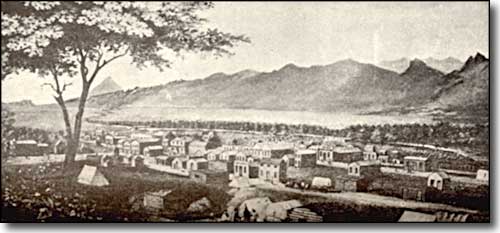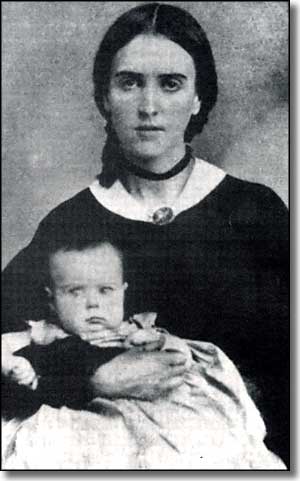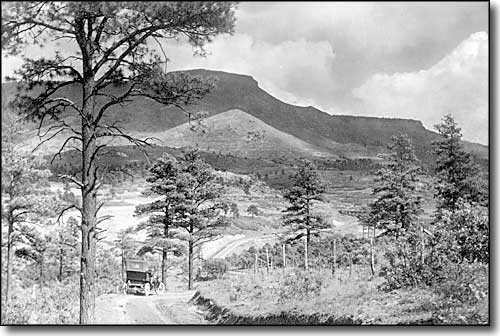 |
Our History and Heritage |
|
|
 Denver in 1859 |

The Intermountain States of the American West have a lot of human history among them. In this space I write some of the stories down before the real history disappears. At the same time, I try to rectify some of the problems caused by the sensationalist writers of the 19th and 20th centuries through telling the truth, as near as we can get to it, and setting the story straight. Part of the problem is that most of the information we have to work with comes from the European invaders. They had a pretty slanted view in terms of the devastation they wreaked on the Native Americans, the countryside and each other. They thought they had a God-given right to do what they did to these Native American "savages," and anyone else they came across who went to a different church. Many of the Native Americans in northern New Mexico and the Four Corners area were living in multi-storied residential complexes with running water and toilet facilities at a time when average Europeans still lived in thatched huts and used their water sources for toilets (think: cholera). The "Christianizing" of the Native Americans is particularly atrocious, especially when you consider that once this was "accomplished," the natives were essentially enslaved to help the Europeans in their insatiable quest to rape the countryside of whatever wealth was there. The truth is not a pretty picture and no amount of Christian European arrogance is going to change that. As soon as the first viable colonies were in place in the New World, the invaders threw open the doors and began importing countless thousands of other Europeans, Asians and Africans who were, in turn, exploited by the Robber Barons, the truest pure capitalists in history. The Robber Baron legacy is everywhere, from the mounds of coal slack and polluted mining tailings to the drowning of Glen Canyon to form Lake Powell. The damage and destruction caused by the Spanish, French, British, Mexican and American militaries is nothing compared to what the scions of American progress have done. The Spaniards came here in the time of the Inquisition, and brought that human/religious disaster with them and inflicted its precepts on every human they met here. The Pueblos of northern New Mexico revolted against the sheer brutality of the methods being used to Christianize them in 1680 (the true first American Revolution). When the Spaniards returned in 1692 (with Don Diego de Vargas at the head of an army conscripted from the prisons of Chihuahua), they stopped their attempts to destroy the Puebloan religions and were much more fair in their treatment of the natives. They got along reasonably well until 1821 when the Mexicans finally had enough and threw the Spaniards out. A treaty was signed but the King of Spain rejected it. Over the next ten years, the fears of the Mexican government resulted in continuing waves of expulsions of Spanish-born citizens until even the ranks of the clergy were decimated. The resulting religious vacuum was partially filled by Los Hermanos Penitente. Then came the Mexican-American War in 1846 and the Taos Rebellion in 1847. Then some of the various Gold Rushes brought to light the "problem" of the Spanish Land Grants. In the Treaty of Guadalupe Hidalgo (which formally ended the Mexican-American War), the Government of the United States guaranteed the inviolability of land ownership that was recorded under the previous Mexican and Spanish governments. However, when push came to shove, the US Government was in Washington, DC and the land grants were more than a thousand miles away. The first Americans on the scene felt safe in robbing the Hispanic settlers of their land and property because Congress couldn't (or wouldn't) enforce the law. And the territorial governments set up by the Americans were generally owned and operated by groups of legalist thieves. The next big, imported disaster arrived with the Civil War, and its' ending. From that point on, everything went downhill quickly, for everyone except the Robber Barons. I look up into the Sangre de Cristo Mountains these days from my back yard and try to imagine: 100 years ago the Rocky Mountain Elk was hunted to extinction. All the forests on the mountains were clear-cut for timber and everything left was burned to make charcoal and to make it easier for miners to do their thing. Once the miners gave up and moved on, the forests were allowed to come back. If that burning hadn't taken place, there wouldn't be any aspen groves breaking up the monotony of pine, fir and spruce forests. So much of this countryside had been homesteaded, and then the settlers left because something was too marginal to support them. A lot of that land reverted to the Federal Land Bank (including the land I live on right now). San Isabel National Forest, the first national forest, began to be assembled in 1908 from some of that land in the Federal Land Bank. It was an experiment that succeeded and spawned the creation of all the other National Forests we now enjoy. Yes, at one time, this area was quite despoiled. Then the despoilers took all they could easily get and moved on and Mother Nature began reclaiming what is rightfully hers. What we see here today is a testament to her strength, love and commitment... and ours. The stories linked from this page are about the insignificant creatures that we are (and always have been) dancing our ephemeral, albeit self-important and self-righteous, dance on this part of the surface of a beautiful blue marble in universal space that we so arrogantly think we own... |
|
Native Americans:
Search for the First Americans The Anasazi The Pueblo Revolt of 1680 Pecos National Historical Park The Nez Perce War - Idaho, Montana The Northern Apache War - Arizona Hispanic Settlers: Juan Bautista de Anza and Cuerno Verde The Penitente Brotherhood The Anglo-Europeans Arrive: The Mountain Men and Other Explorers: Zebulon Pike Bent, St. Vrain & Co. Deserter Point - Utah Kit Carson Uncle Dick Wootton Jean Baptiste Charbonneau Characters from After 1860: Alferd Packer Poker Alice Bat Masterson Cathay Williams, Female Buffalo Soldier Places: Badito - Colorado Boggsville - Colorado Dawson - New Mexico Elizabethtown - New Mexico Jerome - Arizona Legend of the Lost Dutchman Mine - Arizona Tombstone - Arizona
The Big Emigrant Trails:
The Santa Fe Trail Women on the Santa Fe Trail Oregon National Historic Trail Mormon Pioneer National Historic Trail California National Historic Trail Other Trails: The Pony Express National Historic Trail Legendary Trails of southern Colorado Old Spanish National Historic Trail Juan Bautista de Anza National Historic Trail American History: Pre-1860: The Maxwell Land Grant The Mormon Battalion Fort Union National Monument Fort Laramie National Historic Site 1860 & After: The Early Years of Trinidad The German Colony - Custer County The Early Years of Custer County History of the Silver Thread area The Civil War in New Mexico The Colorado Coalfield War The Grattan "Massacre" - Wyoming Johnson County War - Wyoming |
 Raton Pass in the early 1900's |
|
|
 |
| Index - Arizona - Colorado - Idaho - Montana - Nevada - New Mexico - Utah - Wyoming National Forests - National Parks - Scenic Byways - Ski & Snowboard Areas - BLM Sites Wilderness Areas - National Wildlife Refuges - National Trails - Rural Life Sponsor Sangres.com - About Sangres.com - Privacy Policy - Accessibility |
| Upper left photo of Josefa Carson and son Christopher Jr. courtesy of Kit Carson Historic Museums. Image of Denver and photo of Raton Pass courtesy of Colorado Historical Society. Text Copyright © by Sangres.com. All rights reserved. |